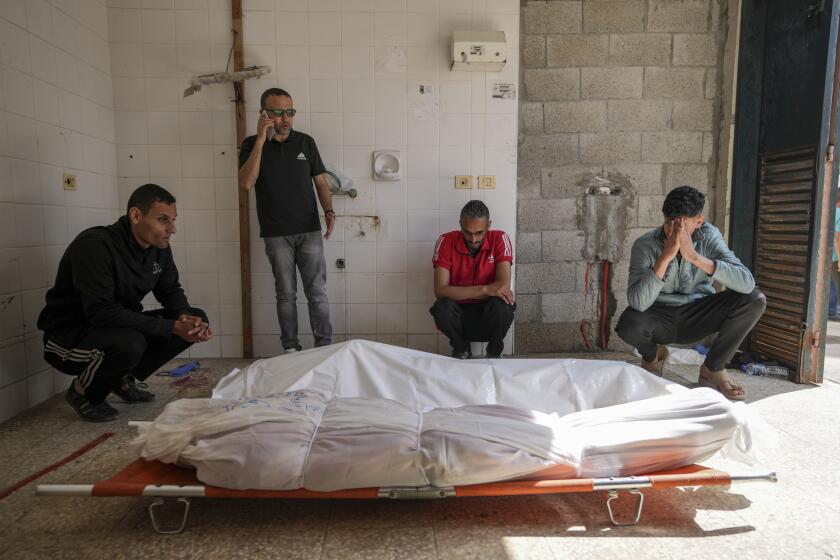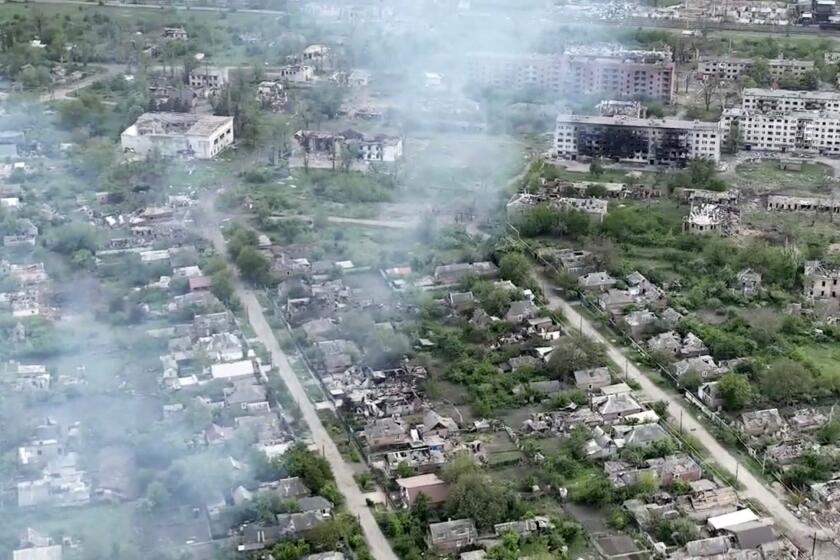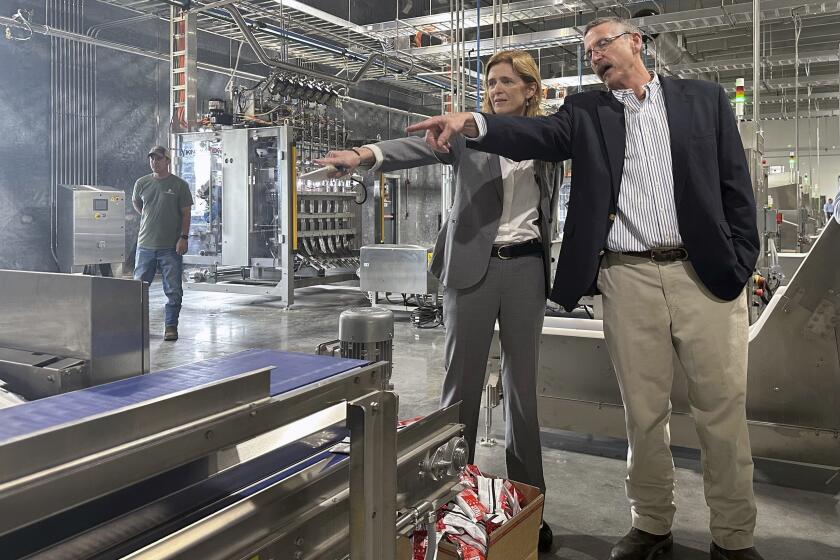Plans for Trade Center Site Get Public Airing
It had all the trappings of a Big Apple nightmare: Put 5,000 New Yorkers in a room and, with TV cameras rolling, ask them to vent their opinions on how to rebuild the World Trade Center.
But the high-tech town hall meeting Saturday was anything but disorderly. In a remarkable display of civility, victims’ families, rescue workers, residents of Lower Manhattan and thousands of others calmly dissected six development plans recently unveiled by the city.
The reviews were mostly negative, with participants chastising planners for creating drab, workmanlike blueprints lacking creative vision.
“We lost something precious on Sept. 11. It was like part of the city was amputated, and we need imaginative plans to restore our skyline,” said Robert Friedrich, a ponytailed accountant who spent the hot summer day quietly debating the future of ground zero with fellow New Yorkers.
“Not to be critical,” retired political science professor Arthur Galub said, in apology, sitting across from Friedrich at one of the 500 tables set up at Jacob K. Javits Convention Center, “but I don’t think that’s the big issue at all. What about more open space?”
It was a day when the quiet tapping of computer keyboards replaced the brawls that often pass for public hearings here. As they sat in groups of 10, participants pondered the blueprints floated by city planners to rebuild 16 acres of prime Lower Manhattan real estate. They registered support or disapproval for individual proposals on hand-held computer keypads, and the results quickly flashed on large TV screens suspended throughout the hall.
“This is a day that connects all of us to ordinary citizens,” said Larry Whitehead, chairman of the Lower Manhattan Development Corp., which helped sponsor the meeting, one of the largest public hearings ever held in New York City. “We’re looking forward to hearing all of your comments.”
Under the city’s plan, New York will winnow the six blueprints--which call for varying blends of office and retail space, a memorial site and open space--into three competing proposals sometime in September. A final design would be selected in December, based in large part on the feedback planners get from a series of public hearings.
Judging by some of the early responses, however, officials may have to return to the drawing board sooner than planned. New York Mayor Michael R. Bloomberg and former Mayor Rudolph W. Giuliani have voiced opposition to the initial proposals, saying they are short on imagination. Those views were echoed at Saturday’s events, with many saying the design lacked a “heroic” feeling.
On the plus side for planners, more than 57% said it was very important for the final plan to add a new, big symbol to the New York skyline, an idea promoted by all of the blueprints. And 64% said they wanted to hasten the project by designing a memorial in tandem with other development, instead of delaying commercial and office construction.
More important, participants voiced broad agreement with planner Roland Betts that a victims memorial, no matter how somber a structure, should turn the World Trade Center site into hallowed, but not morbid, ground.
“Nobody is treating this like a beauty contest, in which you have to approve some ideas and vote thumbs down on others,” said Carolyn Lukensmeyer, president and founder of America Speaks, a firm that sponsors such interactive events across the nation. She served as the emcee of Saturday’s meeting. “The main goal is to find out what you’re thinking.”
When asked what they disliked most about the blueprints, almost a third said the New Jersey Port Authority, which controls the site, should cancel the leases held by private developers to rebuild office and retail facilities. The city should “start fresh” with less-densely developed office structures, many said, and sponsor more-affordable housing projects.
“Why not?” asked Tomar Arnaz, a New Jersey college student. “Why not take an opportunity to really dream big and do something very special?”
Some sponsors tried to discourage such thinking. When he spoke about various development alternatives, Frank Lombardi, the Port Authority’s chief engineer, appeared to deliver a short lecture on economic realities.
“Some ask why these plans include so much commercial and office space,” he said. “But the site is not a blank slate. Last summer we leased parts of the area for 99 years, and those parties have a right to rebuild.”
Lombardi was referring to Silverstein Properties, which held a lease to operate the twin towers, and Westfield America, which ran the commercial real estate at the doomed site. Although Port Authority officials insist they need to restore 11 million square feet of office space that was obliterated when the two buildings were destroyed, a host of critics strongly disagreed.
Developer Larry Silverstein “is like a 900-pound gorilla in the room,” professor Galub said. “He limits the kind of planning we can do.”
As she lobbied participants on the periphery of the large convention hall, environmental activist Jenna Orkin said planners of the meeting had ignored many competing concerns.
“The whole issue of environmental protection has been buried here,” she complained. “The air is still polluted, still contaminated in Lower Manhattan, and many people are living with toxins in their homes. But this meeting is talking about putting up new buildings as soon as possible.”
For the most part, however, the event was rancor free. And a key reason was that special “facilitators” sat at each table, guiding the discussions and keeping the participants focused.
The event was a bit overwhelming for Susan Nurre, a quiet, Dallas-based facilitator. When New Yorkers at her table began quibbling over which Lower Manhattan neighborhoods had the worst early morning traffic congestion, her eyes glazed over. But she remembered why she had come to the meeting.
“I heard some victims’ families say only they should have been here, and I don’t agree,” Nurre said. “We all lost something on Sept. 11--not just victims, but people who had their hearts broken all over the country.”
Approving the right design for the World Trade Center site is not just a Manhattan decision, she added, “because the whole world is watching.”
More to Read
Start your day right
Sign up for Essential California for news, features and recommendations from the L.A. Times and beyond in your inbox six days a week.
You may occasionally receive promotional content from the Los Angeles Times.






